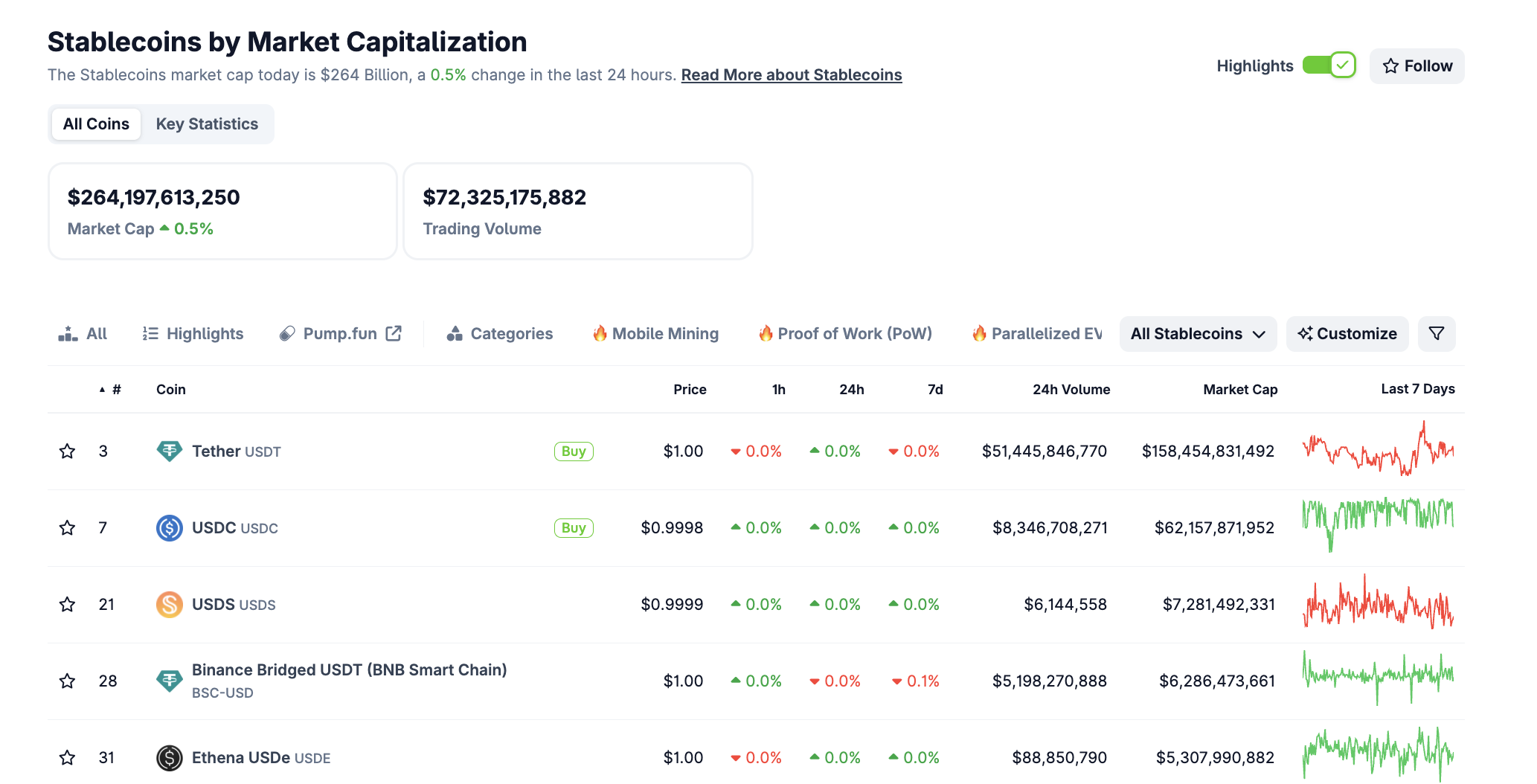A recent JPMorgan report provides a cautious forecast for the stablecoin market, predicting that the market size will reach $500 billion by 2028.
This new prediction is half the level of the U.S. Treasury's forecast. In April, the U.S. Treasury analyzed that the stablecoin market capitalization would reach $2 trillion during the same period.
JPMorgan Pessimistic About Stablecoin Market
According to JPMorgan's forecast, stablecoin growth is constrained by limited adoption outside of cryptocurrency trading.
According to the report, 88% of current stablecoin demand comes from activities within the cryptocurrency ecosystem, such as trading, DeFi, and reserves held by cryptocurrency companies. In contrast, the percentage used for payments is only 6%, which corresponds to about $15 billion.
These figures suggest that stablecoins have not yet become a widely used payment tool in the real economy.
JPMorgan also dismisses the possibility of stablecoins replacing traditional currency in the short term. The reasons include a lack of attractive yields and barriers to conversion between fiat and cryptocurrencies. However, according to a survey, 49% of the 259 global institutions surveyed are currently using stablecoins for payments, and another 41% are testing or planning to do so.
Additionally, the bank argues that the expansion of the digital Chinese yuan (e-CNY) or the success of Alipay and WeChat Pay are not templates for future stablecoin development.
Nevertheless, there are several more optimistic predictions about the future of the stablecoin market. U.S. Treasury Secretary Scott Bessent predicted that the USD-based stablecoin market could exceed $2 trillion by 2028. This is thanks to clear regulations such as the GENIUS Act passed in the U.S. Senate in June 2025.
Another report by BeInCrypto forecasts that the stablecoin market size could reach $2.5 trillion due to increasing interest from financial institutions and the integration of stablecoins in commercial transactions.
Stablecoin Market Continues to Grow
These differences reflect various perspectives on the potential of stablecoins and raise questions about whether this digital asset class can be integrated into the traditional financial system. Nevertheless, the stablecoin market continues to witness unprecedented growth, with a market capitalization exceeding $264 billion.

The dominance of stablecoins in over-the-counter (OTC) cryptocurrency trading is also a positive signal. According to Finery Markets, stablecoins accounted for 74.6% of total institutional OTC trading volume in the first half of 2025, significantly increasing from 46% in the previous year to 23% in 2023.
"The true potential of stablecoins is unlocked by seamlessly connecting issuance with an active and deep secondary market. For stablecoins to gain widespread utility and trust, they must have high liquidity, easy tradability, and legal stability across various liquidity pools and secondary venues," added the Finery Markets report.
This indicates that stablecoins are becoming an important tool for financial transactions, especially in cross-border transactions and quick settlements.







